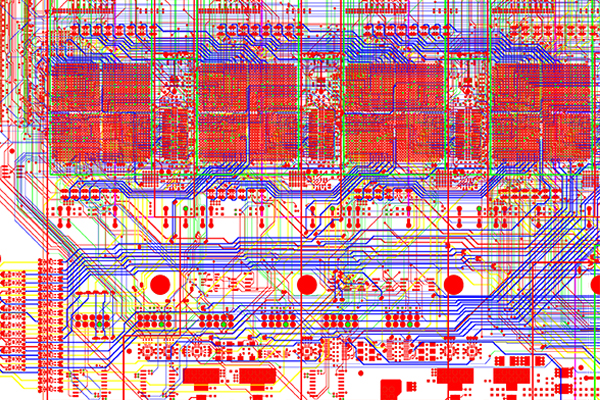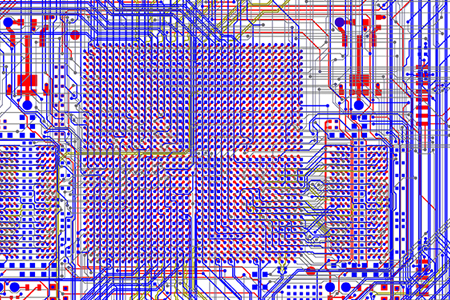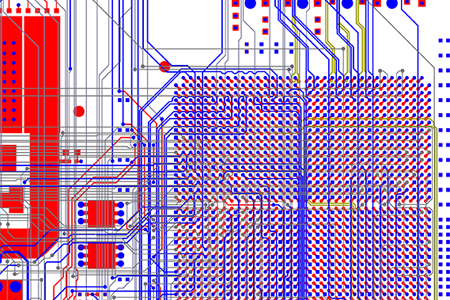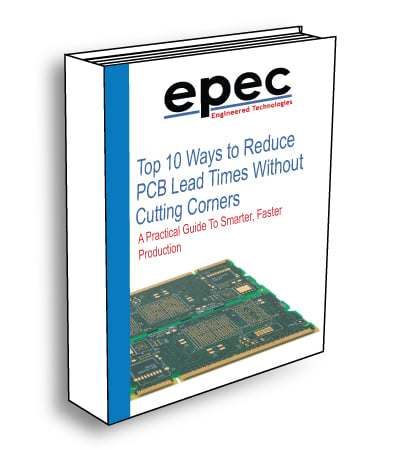Signal Integrity (SI)
The losses associated with PCB transmission lines constitute an important topic in area of high-speed simulation/design and signal integrity. Digital designs have not traditionally suffered by issues associated with transmission line effects.
Lower Frequencies
At lower frequencies the signals remain within data characterization and the system performs as designed. But as system speeds increase, the higher frequency impact on the system means that not only the digital properties, but also the analog effects within the system must be considered. Some of the biggest design challenges surround the I/O signaling where transmission line effects can have a significant effect on the data being sent.
Lower Speeds
At low speeds, the frequency response has little influence on the signal, unless the transmission medium is particularly long. However, as speed increases, high-frequency effects take over, and even the shortest lines can suffer from problems such as ringing, crosstalk, reflections and ground bounce, seriously hampering the response of the signal - thus damaging signal integrity. In reality, these problems can be overcome by good design technique and by following simple layout guidelines.

Printed Circuit Board Schematic Depicting Signal Integrity
PCB Considerations During the Circuit Design
Below are some of the guidelines that have been published by many different sources such as Texas Instruments that addresses high-speed signals such as clock signals and their routing and gives designers a review of the important coherences. Because many things can affect transmission lines, EMI problems can occur. In order to reduce these problems, good PCB design is important and with some simple design rules, the PCB designer can minimize these problems.
- What is the highest frequency and fastest rise time in the system?
- What are the electrical specifications at the inputs and outputs of the sinks and sources?
- Are there sensitive signals to route – for example, think about controlled impedance, termination, propagation delay on a trace (clock distribution, buses, etc.)?
- Is a microstrip adequate for the sensitive signals, or is it essential to use stripline technique?
- How many different supply voltages exist? Does each supply voltage need its own power plane, or is it possible to split them?
- Create a diagram with the functional groups of the system – e.g., transmitter path, receiver path, analog signals, digital signals, etc.
- Are there any interconnections between at least two independent functional groups? Take special care of them. Think about the return current and crosstalk to other traces.
- Clarify the minimum width, separation and height of a trace with the PCB manufacturer. What's the minimum distance between two layers?
- What about the minimum drill and the requirements of vias?
- Is it possible to use blind vias and buried vias?
Traces, Vias, and Other PCB Components
- A right angle in a trace can cause more radiation. The capacitance increases in the region of the corner, and the characteristic impedance changes. This impedance change causes reflections.
- Avoid right-angle bends in a trace and try to route them at least with two 45° corners. To minimize any impedance change, the best routing would be a round bend.
- Separate high-speed signals (e.g., clock signals) from low-speed signals and digital from analog signals; again, placement is important.
- To minimize crosstalk not only between two signals on one layer but also between adjacent layers, route them with 90° to each other.
- The use of vias is essential in most routings. But the designer has to be careful when using them. They add additional inductance and capacitance, and reflections occur due to the change in the characteristic impedance. Vias also increase the trace length.
- Avoid vias in differential traces.
Printed Circuit Board Construction
Desired printed circuit board construction (build-up) depends on the component packages used in the design, required signal trace density, and impedance matching requirements. For the high speed boards, using a multilayer PCB with buried ground and power supply planes is mandatory. Solid copper planes allow designer to keep the device ground and power connections short. Further, the ground plane offers low inductance return paths for the high speed signals.
PCB Laminate Selection
Today, FR-4 PCB laminate material is widely used in electronic industry. The FR-4 material is economical solution for most of the digital designs as long as frequencies on board can be kept below some 2.5-3 GHz range. At high speeds the digital signal may be affected by the parameters of the printed circuit board laminate that it travels on.
Dedicated high speed laminates (like Rogers RO4350) have better properties at higher frequencies than FR 4 does. Using right materials would help designer to reach his design target easier and more reliably than with FR-4 material. The biggest trade off when a non FR-4 material is used is that the cost differential of the laminate is substantial.
Firstly, a signal travelling through the printed circuit board has a velocity that is dependent on the dielectric constant of the printed circuit board. For example, when the signal frequency goes beyond 5 GHz, the typical dielectric constant of FR-4 (around 4.7) drops close to 4. However, the relative dielectric constant of the Rogers RO4350 material is constant (roughly 3.5) from 0 up to 15 GHz. If the dielectric constant of the printed circuit board changes versus frequency, then different frequency components of the signal will have different velocities. This means, that these components will reach the load at different times. As a result, this will be causing distortion of the digital signal.
Secondly, the signal losses due to printed circuit board material increase with frequency. Again, each harmonic of the digital signal will be attenuated according to that frequency of operation. Increased loss of the signal components will add to the distortion of the digital signal.
Printed circuit board layout is often the single most important factor affecting the electromagnetic compatibility of electronic systems. Boards that are auto-routed or laid out according to a list of "design rules" do not usually meet electromagnetic compatibility requirements on the first pass; and the products using these boards are more likely to require expensive fixes such as ferrites on cables and shielded enclosures. Taking the time to ensure that components are properly placed and traces are optimally routed will generally result in products that meet all electromagnetic compatibility and signal integrity requirements on time and on budget.
Need Help with Your PCBs Signal Integrity?
Unlock signal integrity with Epec's high-speed pcb solutions. Optimize your high-frequency PCB designs now for zero compromise on performance.
Request a Quote Request Design Support Request More Information





